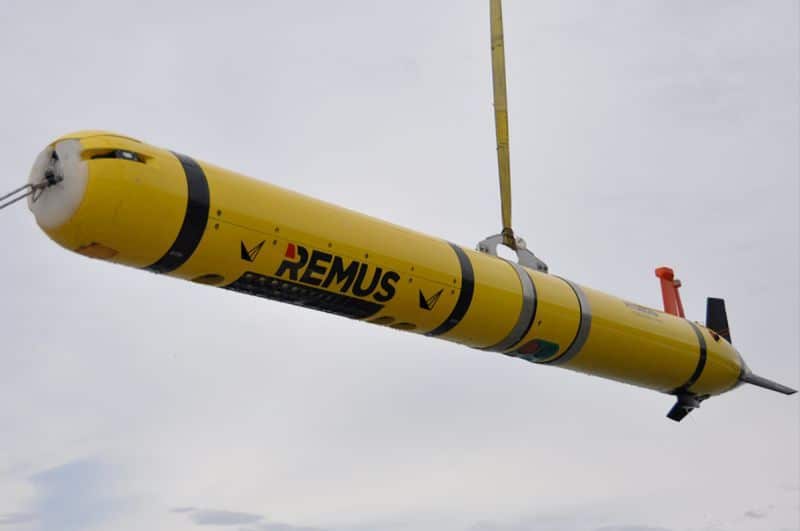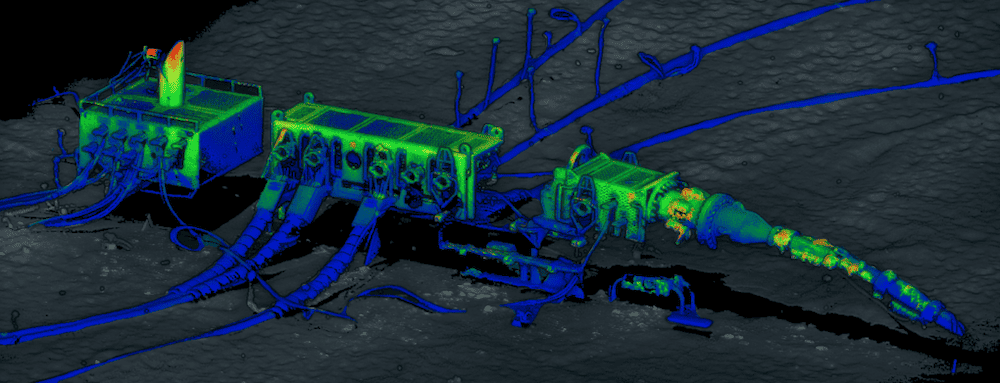In an interview with Forcys, Captain Christian Haugen, USN (Ret.), provided a perspective on the US’ dominance of the underwater domain and Subsea and Seabed Warfare (SSW), and explains how Forcys technology is helping.
Asked about its importance, Haugen stated that the underwater domain remains crucial to any maritime strategy and especially so in the Indo-Pacific region. He explained that Uncrewed Underwater Vehicles (UUV) play an increasingly important role in a variety of missions, including intelligence gathering, minesweeping, and anti-submarine warfare. Haugen went on to say that the United States Navy has a long history of leadership in the UUV space, developing and deploying UUVs for decades, and it continues to invest heavily in this technology.
Haugen, who is now the Business Development Manager for Forcys in the United States, said, “The US Navy’s dominance is due to several factors starting with our strong alliances. The US Navy works closely with countries like Australia, Japan, and Korea. Working with well-trained and well-equipped navies in support of common security objectives is a force multiplier. This is particularly important in the Indo-Pacific region, which is the point of most friction and greatest stress on our ability to answer a near-peer competitor.”
Captain Haugen believes the AUKUS security pact between Australia, the United Kingdom, and the United States is another significant development in the underwater domain.
Captain Haugen believes dominance of the undersea domain will be crucial to any conflict in the region. At some point, should tensions escalate, task forces and other surface vessels will have to withdraw outside the range of our adversary’s long-range anti-surface missiles. Submarines and uncrewed systems, both UUVs and seafloor networks will remain to provide indications and warnings and should it be necessary, take the fight to the enemy.
High-level guiding documents such as the CNO’s Navigation Plan (2022), the Navy’s Unmanned Campaign Plan (2021), and the Submarine Forces Commander’s Intent (2020), all emphasize the importance of SSW. Budgets and programs support the push to achieve and maintain a technological advantage over its adversaries in the UUV space. The Navy’s superiority will continue to come from investment in research and development as well as continuing to foster a close relationship with the US defense industry.
Keeping the advantage is about meeting the challenge
Haugen explains: “The US Navy faces a number of challenges in the underwater space, including the development of new UUV capabilities by near-peer competitors, the challenges of processing and analyzing the massive amount of data that UUVs can generate, and the limited bandwidth that is available to UUVs.
“Our near-peer competitors are catching up quickly. The first thing to be aware of is that they continue to develop capacity through aggressive ship and submarine building programs. Next is that they continue to improve their technology. The Navy’s 30-year shipbuilding plan now relies heavily on uncrewed maritime vessels to meet our capacity needs. Delivering those vessels—surface or undersea—will require honing technologies to allow those systems to accomplish complex missions with high levels of autonomy.
“From engineers to operators, it’s the experts in everything from UUV design and construction to UUV deployment, operations, and maintenance that are keeping us formidable in SSW. We continue to push the limits of capability and expand mission sets for UUVs through aggressive experimentation and exercises to create new doctrine, tactics, techniques, and procedures.”
Uncrewed systems bring new challenges:
“Data overload is a good problem to have. New underwater sensing technologies can generate massive amounts of data. Take for instance the optical payloads developed by our technology partner, Voyis. They generate three dimensional maps with incredible resolution of actionable data. But just how do you share it without recovering to the surface.”
You should communicate with them. Haugen describes this challenge, “The underwater domain is limited by the acoustic communications data rates. And that same acoustic comms compromises the existence and location of the undersea system. Optical systems offer higher data rates but require very close proximity for the communicating systems. Exfiltrating data or passing mission commands is a problem that will get bigger before it gets smaller.”
It’s a question of trade-offs
“The edge processing required for autonomous systems becomes a huge issue itself. Most Artificial Intelligence/Machine Learning (AI/ML) systems require significant processing power to run. This will seriously degrade mission endurance with a knock-on effect on capability. The balancing point between processing data at the edge and exfiltrating it for real-time or near real-time use is a really tough technology question that I know the Navy is working on.”
The Importance of Trust and Autonomy
“The use of unmanned systems in the underwater domain raises a number of concerns about trust and autonomy. In the air and on land, unmanned systems have been used for a variety of missions, including ISR, ASW, and strike warfare. Lethal effectors continue to have a human in the loop.” Haugen continues, “To be successful, unmanned systems in the underwater domain will need to be able to operate more autonomously than unmanned systems in other domains. A lot of work is going into this space with AI/ML. Despite these challenges, the use of unmanned systems in the underwater domain will become increasingly important in the future. They offer a number of potential advantages, including their relatively low cost, and their now accepted suitability for the dirty, dangerous, and drudging tasks as they operate autonomously.”
Our commitment
“I’m enthusiastic about Forcys and what we can bring to support SSW. I am impressed with our technology partners and their world-leading technology in navigation and positioning systems, acoustic and optical communications, optical and laser imaging, side-scan and forward-looking sonars, intruder detection systems, UUV mission software, and environmental monitoring sensors. The ability to take that and apply it to tough military problems has been very exciting. The need for this technology in SSW is enormous. I am committed to developing teaming relationships with vehicle builders and other technology providers to help support and develop the next generation of Navy undersea warfare capability.
“There is no question. The Navy is committed to investing in UUV technology and it has the personnel and the resources to maintain its dominance. If you are like me, you’d want to give them the best possible chance. We do that with our technology offering.”










